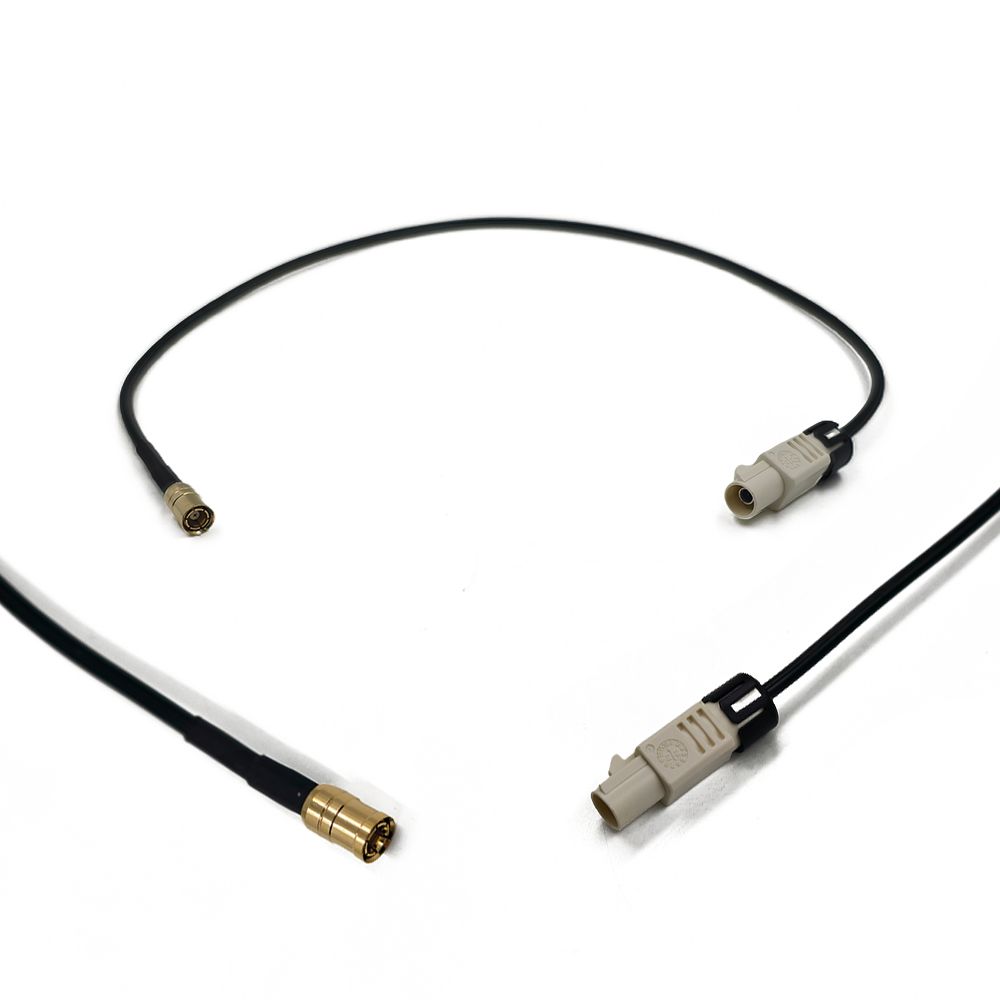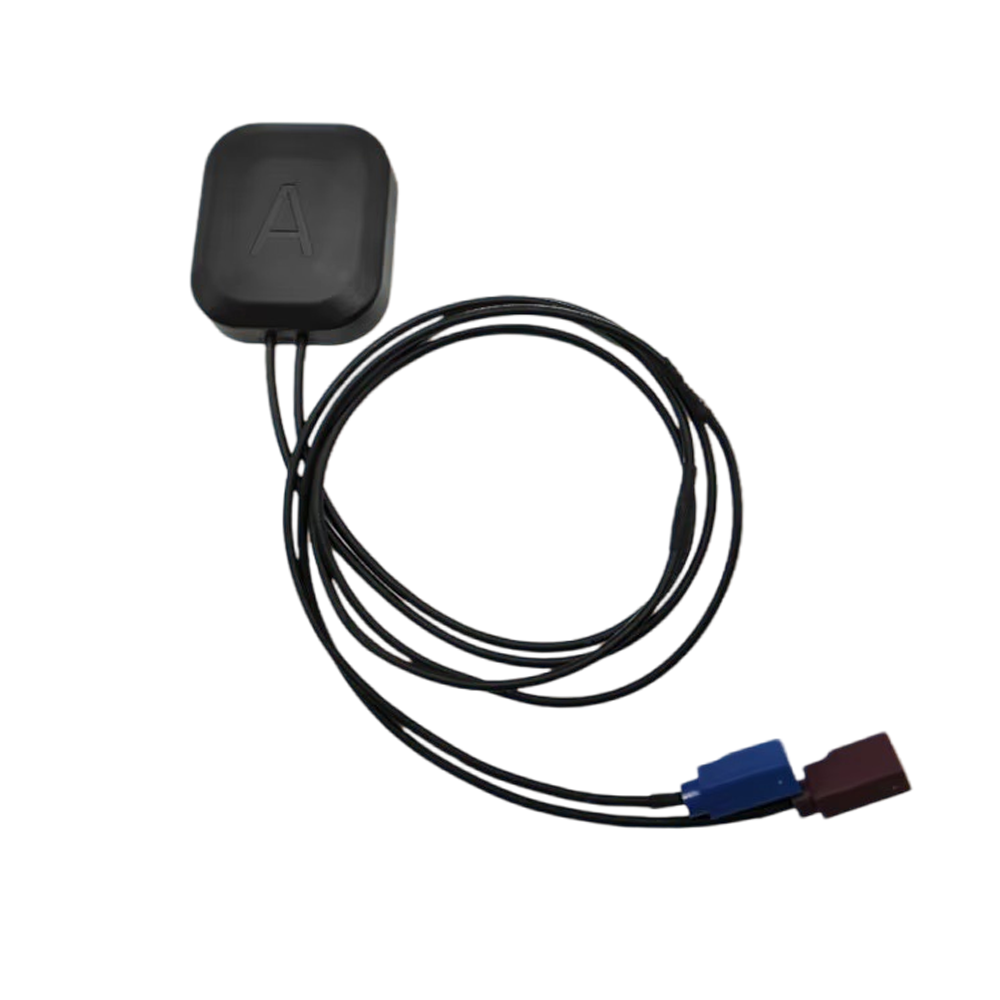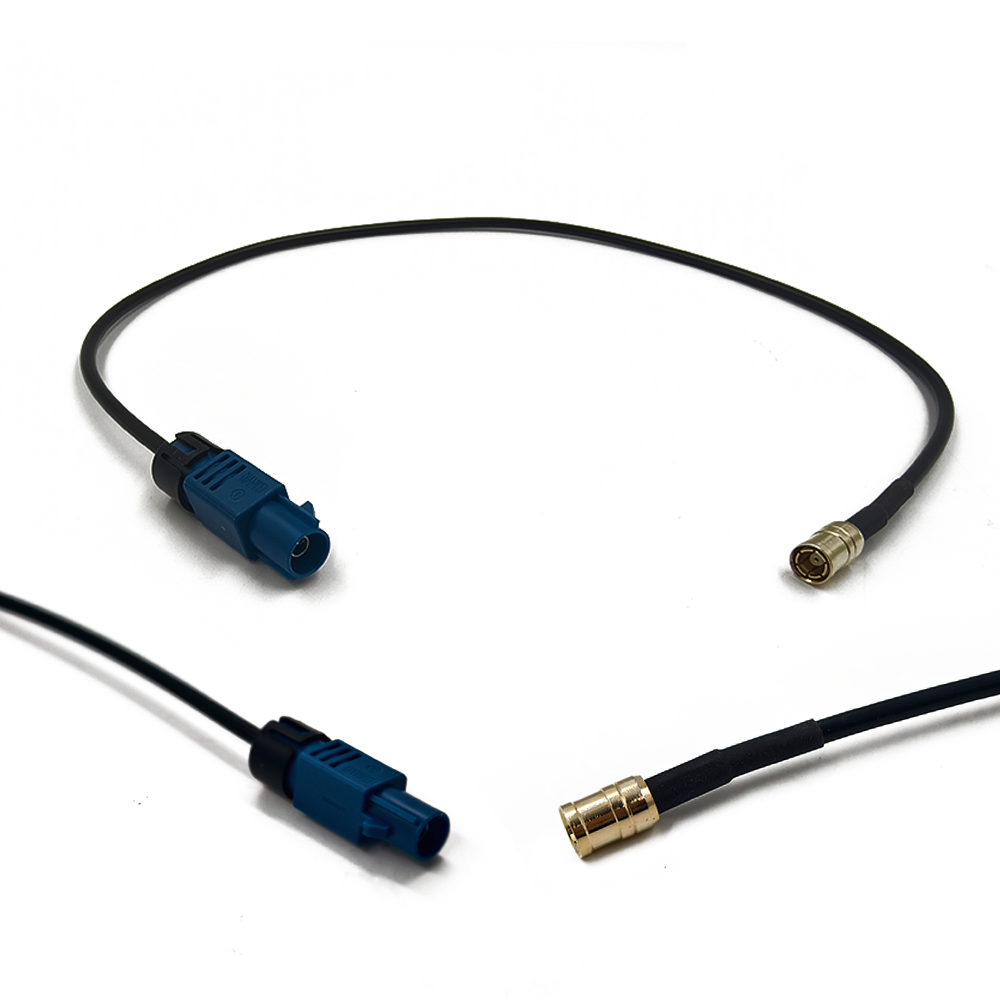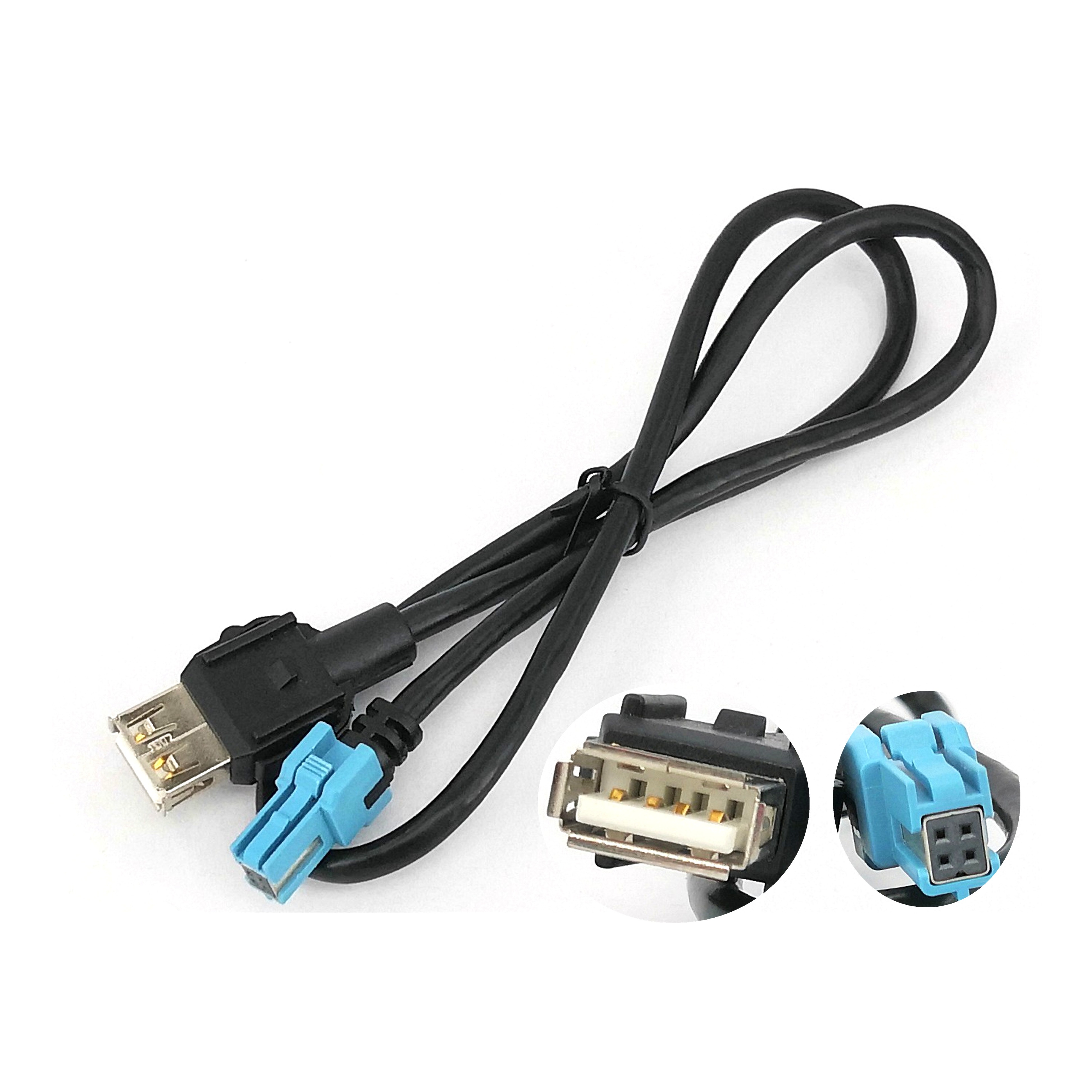At the core of this wiring harness is its 7 conductors, a configuration that underscores its ability to handle multiple functions simultaneously while maintaining signal integrity. In automotive GNSS systems, conductors serve distinct purposes: some carry the high-frequency GNSS signals from the antenna to the receiver, others provide power to the antenna’s low-noise amplifier (LNA), and additional conductors may support auxiliary functions such as diagnostic data transmission or interference mitigation. The 7-conductor design ensures that each signal path is isolated, minimizing crosstalk—electromagnetic interference between adjacent conductors—that can degrade signal quality. This isolation is critical for GNSS signals, which are inherently weak (typically around -160 dBm at the antenna) and susceptible to corruption. By separating power, signal, and auxiliary paths, the harness ensures that the delicate GNSS signals remain clean, enabling the receiver to accurately decode positioning data even in the noisy electromagnetic environment of a vehicle, where engines, alternators, and other electronics generate significant interference.
The product name—car automotive Fakra HSVL wiring harness—highlights its adherence to the FAKRA standard, a widely recognized specification for automotive RF connectors developed by the German automotive industry. FAKRA (Fachkreis Automobil) connectors are designed to meet the strict requirements of automotive applications, including resistance to vibration, temperature extremes, and chemical exposure. The HSVL designation refers to a specific keying and color-coding scheme, ensuring that the connector is compatible only with its intended mating part, reducing the risk of incorrect installation. This standardization is critical for automotive manufacturing, where consistency and reliability are paramount. By conforming to FAKRA specifications, the wiring harness ensures interoperability with a wide range of GNSS antennas, receivers, and in-vehicle infotainment systems, simplifying integration into diverse vehicle models and brands.
The wire type—RG174—is a coaxial cable well-suited for high-frequency signal transmission in automotive applications. RG174 is a small-diameter cable (typically around 2.7 mm) with a stranded copper center conductor, a dielectric insulator, a braided copper shield, and a PVC or TPE outer jacket. Its compact size makes it ideal for routing through the tight spaces of a vehicle’s interior, where wiring harnesses must navigate around structural components, dashboards, and trim panels. The braided shield—typically 95% coverage—provides excellent protection against electromagnetic interference (EMI) and radio frequency interference (RFI), preventing external noise from corrupting the GNSS signal and preventing the signal from radiating and interfering with other vehicle electronics. The dielectric insulator, often made of polyethylene, ensures stable impedance (50 ohms, the standard for RF applications), maintaining consistent signal transmission across the cable’s length. For automotive use, RG174 cables are often rated for flexibility and resistance to oil, fuel, and abrasion, ensuring durability in the harsh under-hood or cabin environments.
As an automotive application wiring harness, this component is engineered to withstand the unique challenges of vehicle operation. Automobiles expose electronics to a wide range of stresses: constant vibration from the engine and road, extreme temperature fluctuations (from sub-zero winters to scorching summers), exposure to moisture, dust, and road salts, and mechanical stress from repeated assembly and disassembly during vehicle maintenance. The FAKRA HSVL harness is designed to meet or exceed automotive industry standards for these conditions, with materials and construction techniques that ensure long-term reliability. For example, the outer jacket is often made of flame-retardant, halogen-free materials to meet safety regulations, while the connectors are secured with locking mechanisms to prevent disconnection due to vibration. These features make the harness suitable for use in a variety of vehicle types, including passenger cars, trucks, SUVs, and electric vehicles, where reliable GNSS performance is essential for navigation, telematics, and ADAS functionality.
The connector configuration—4-pin blue male to brown female mini FAKRA—combines precision engineering with color-coding to ensure secure, error-free connections. FAKRA connectors use a keyed design, where the male and female parts have unique protrusions and recesses that allow mating only with their designated counterparts. The blue male and brown female color coding further simplifies installation, enabling technicians to quickly identify the correct connection points. The 4-pin design is optimized for GNSS applications, with pins dedicated to signal, power, ground, and sometimes a control line for the antenna’s LNA. This configuration ensures that power is delivered reliably to the LNA, which is critical for amplifying weak satellite signals, while the signal pin provides a low-loss path for the amplified signal to reach the receiver. The mini FAKRA form factor is smaller than standard FAKRA connectors, making it suitable for applications where space is limited, such as in modern vehicles with crowded dashboards or integrated antenna systems.
The storage and operating temperature ranges of -40°C to +85°C underscore the harness’s ability to perform in extreme environmental conditions. In automotive applications, wiring harnesses may be stored in unheated warehouses or transported in vehicles exposed to sub-zero temperatures, while during operation, they may be subjected to high temperatures under the hood or in direct sunlight. The materials used in the harness—including the cable jacket, connector housings, and internal conductors—are selected to maintain their mechanical and electrical properties across this range. For example, the PVC or TPE jacket remains flexible at low temperatures, preventing cracking, while at high temperatures, it resists melting or degradation. The metal components of the connectors, such as the pins and shielding, are treated to resist corrosion and maintain conductivity even in temperature extremes. This temperature resilience ensures that the harness continues to transmit signals reliably, whether the vehicle is operating in the Arctic Circle or the Sahara Desert.
The length of 730mm (with customized length options) provides flexibility for integration into different vehicle designs. The 730mm length is a standard configuration that works for many installations, allowing the GNSS antenna (typically mounted on the roof, trunk, or windshield) to connect to the receiver (often located in the dashboard or center console) with minimal excess cable. Excess cable can lead to signal loss, EMI pickup, or installation challenges, so a properly sized harness is essential for optimal performance. Customized length options enable manufacturers to tailor the harness to specific vehicle models, ensuring a perfect fit that minimizes routing complexity and maximizes signal integrity. Whether the antenna is mounted on the roof of a compact car or the rear windshield of a truck, the ability to customize length ensures that the harness can be integrated seamlessly, reducing installation time and improving reliability.
The color options—blue and brown (with customized color options) serve both functional and aesthetic purposes. As mentioned, FAKRA connectors use color coding to ensure correct mating, with blue and brown indicating specific keying configurations that prevent cross-connection. This functional role is critical for avoiding installation errors that could damage components or degrade performance. Beyond functionality, customized colors allow manufacturers to match the harness to the vehicle’s interior or wiring loom, improving aesthetics and simplifying identification during maintenance. For example, a harness used in a luxury vehicle may be color-matched to the interior trim, while a harness in a commercial truck may use high-visibility colors to facilitate inspection. This combination of functionality and customization makes the harness a versatile solution for diverse automotive design requirements.
Now, let’s explore the specific applications where this FAKRA Connector GNSS Antenna wiring harness excels, leveraging its design features to enhance automotive performance. One of the primary applications is in in-vehicle navigation systems, where reliable signal transmission is essential for providing accurate turn-by-turn directions. The harness’s 7 conductors, RG174 cable, and FAKRA connectors ensure that GNSS signals are transmitted with minimal loss, enabling the navigation system to maintain a stable lock on satellites even in urban canyons or under dense tree cover. The temperature resilience of the harness ensures that navigation remains reliable in extreme weather, from hot summer days to cold winter nights.
Advanced driver-assistance systems (ADAS) rely heavily on precise GNSS data to function safely, and this harness plays a critical role in delivering that data. ADAS features such as adaptive cruise control, lane centering, and automatic emergency braking use GNSS to determine the vehicle’s position relative to the road, other vehicles, and obstacles. The harness’s ability to minimize EMI and maintain signal integrity ensures that this data is accurate and up-to-date, reducing the risk of system errors that could lead to accidents. The secure FAKRA connectors and vibration-resistant design further enhance reliability, ensuring that ADAS systems operate consistently even on rough roads or during aggressive driving.
Telematics and vehicle connectivity applications also benefit from the harness’s robust performance. Telematics systems use GNSS to track vehicle location, monitor driver behavior, and provide emergency services in the event of an accident. The harness ensures that location data is transmitted accurately and continuously, enabling fleet managers to optimize routes, parents to monitor teen drivers, and emergency responders to locate disabled vehicles quickly. The 7-conductor design supports auxiliary data transmission, allowing telematics units to communicate with the antenna’s LNA or other sensors, enhancing system functionality.
Electric and hybrid vehicles present unique challenges for wiring harnesses, including higher levels of electromagnetic interference from electric motors and battery management systems. The RG174 cable’s braided shield and the harness’s conductor isolation effectively mitigate this interference, ensuring that GNSS signals remain clean. The temperature resilience of the harness is also valuable in electric vehicles, where battery systems can generate significant heat during charging or operation.
In commercial vehicles such as trucks and delivery vans, the harness’s durability and customization options make it an ideal solution. These vehicles often operate in harsh conditions, from construction sites to remote rural areas, and require wiring harnesses that can withstand dust, moisture, and vibration. The customized length options allow the harness to be tailored to the vehicle’s size and antenna placement, while the color coding simplifies maintenance and repairs. For fleet operators, reliable GNSS performance is essential for tracking assets, optimizing delivery routes, and ensuring on-time arrivals, all of which are supported by the harness’s robust design.




































































 Language
Language
 En
En Cn
Cn Korean
Korean

 Home >
Home > 








 18665803017 (Macro)
18665803017 (Macro)













